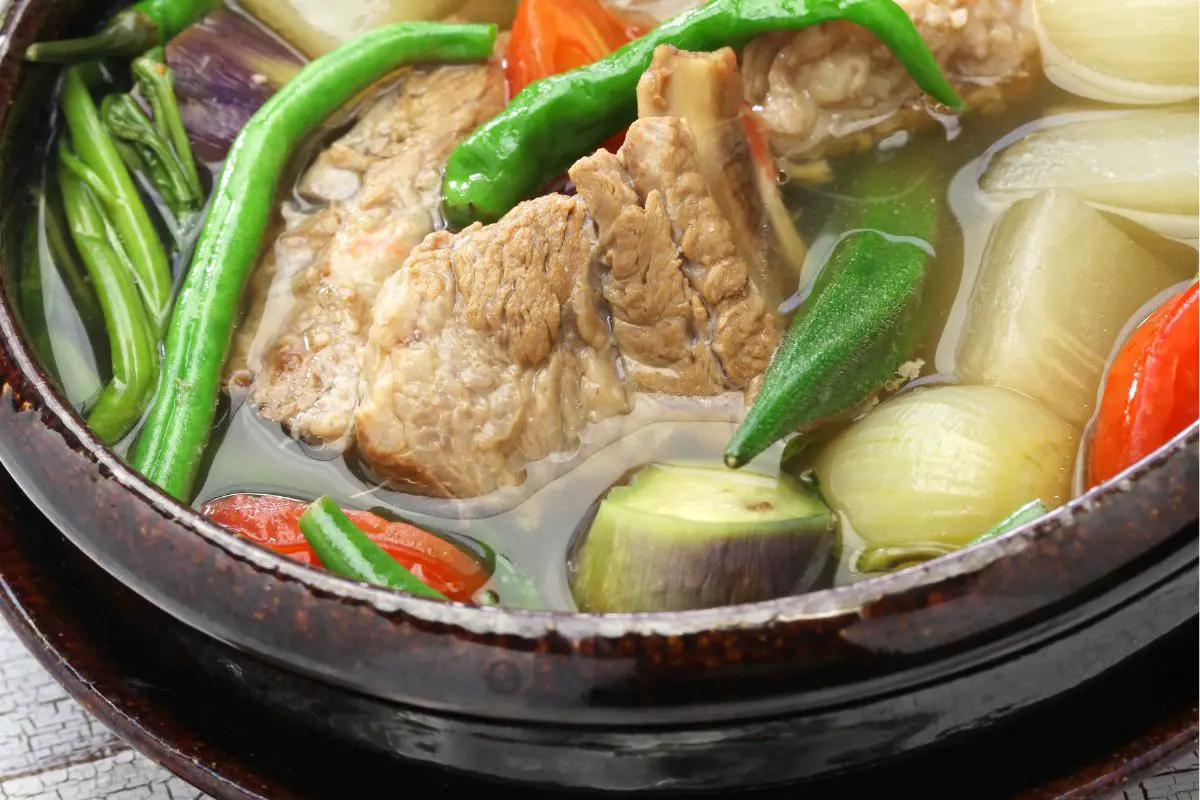Authentic Filipino Food Recipes to Try in your home
Checking out genuine Filipino food dishes presents a possibility to appreciate the intricate flavors and cultural significance behind each recipe. Utilizing fresh, local components is essential, as is accepting public eating-- a characteristic of Filipino society.
Popular Filipino Cuisines
Filipino food boasts an abundant tapestry of tastes and practices, with over a loads famous recipes that highlight the nation's varied cultural influences. Among one of the most popular recipes is Adobo, a savory stew normally made with hen or pork, marinaded in vinegar, soy sauce, garlic, and seasonings. Its tasty flavor account makes it a staple in Filipino households.
One more cherished dish is Sinigang, a sour soup frequently made with tamarind, tomatoes, and various vegetables. This recipe can feature pork, shrimp, or fish, and its rejuvenating preference is best for warm climates. For those with a sweet tooth, Leche Flan-- a luscious sugar custard-- functions as a preferred treat, showcasing the Filipino propensity for abundant, pleasant flavors.
Kare-Kare, a passionate oxtail stew with a thick peanut sauce, along with the famous lumpia, or springtime rolls, additionally exhibit the variety located in Filipino food. Each recipe not only supplies one-of-a-kind preferences but also narrates of regional ingredients and historic influences, making Filipino food a vibrant representation of its society and heritage.
Crucial Ingredients for Filipino Cooking
The essence of Filipino food preparation lies in its crucial active ingredients, which act as the structure for the country's precious meals. A variety of flavors and appearances integrated, showcasing the varied social impacts that form Filipino food.
Key active ingredients include rice, the staple that comes with nearly every meal, representing food and neighborhood. Soy sauce, vinegar, and fish sauce (patis) are crucial for flavoring, imparting umami and deepness to dishes. Fresh natural herbs like cilantro and basil add fragrant quality, while garlic, onion, and ginger give a durable flavor base.
Healthy protein resources such as pork, chicken, and fish and shellfish are central to many recipes, typically marinated to enhance taste. Veggies like eggplant, bitter melon, and green beans contribute essential nutrients and equilibrium - Filipino food recipes. Coconut milk is an additional considerable ingredient, lending creaminess and a refined sweetness to numerous stews and desserts
Last but not least, calamansi, a citrus fruit, supplies a rejuvenating tang that raises dishes and beverages alike. Together, these components produce the dynamic and rich tapestry of flavors that specify Filipino cuisine, making it both reassuring and distinctive. Recognizing these principles is important for anyone wanting to reproduce genuine Filipino dishes at home.
Step-by-Step Recipe Guide

Start by preparing your active ingredients. For Adobo, slice the meat into consistent pieces and marinade it in soy sauce, vinegar, garlic, and bay leaves for a minimum of 30 minutes. Next off, warmth oil in a pan and sauté the garlic and onions up until great smelling, after that add the seasoned meat, allowing it to brownish evenly.
For Sinigang, description begin by boiling water in a pot and adding your selection of meat. When tender, integrate tamarind paste or fresh tamarind for that trademark sour taste. Adhere to with vegetables like radish and kangkong, food preparation till simply tender.

Tips for Authentic Taste
Typically, attaining authentic flavor in Filipino recipes rests on the careful choice and treatment of active ingredients. Begin with fresh, top notch fruit and vegetables, as the vibrancy of veggies and herbs substantially boosts the recipe's total taste. Staples like garlic, onions, and ginger create the fragrant structure for several dishes; using them in proper proportions is essential.
Choosing the appropriate protein is equally essential. For example, standard adobo often utilizes chicken or pork, marinaded to absorb the marinade's full taste. Additionally, consider sourcing locally created or regional components, as they can supply authenticity that store-bought options lack.
Food preparation strategies additionally play an essential role. Slow-cooking approaches, such as braising or stewing, allow tastes to meld perfectly, while frying can include an enjoyable structure. Don't overlook seasoning; using salt, fish sauce, or soy sauce at the ideal minutes can boost a meal dramatically.
Serving and Appreciating Filipino Food
Cooking experiences are enhanced when Filipino food is offered with attention to custom and area. The technique of sharing meals is main to Filipino society, representing unity and friendliness. When serving Filipino recipes, think about utilizing typical serveware, such as clay pots or bamboo baskets, which boost the credibility of the experience.
Typically, Filipino dishes are enjoyed family-style, with a selection of recipes positioned at the center of the table. This common method motivates interaction and enables guests to example different flavors. A well-curated spread might consist of staples like adobo, sinigang, and lumpia, matched by rice, which is a fundamental element of my response every meal.
Accompanying the food with traditional spices, such as soy sauce, vinegar, or chili paste, can elevate the dining experience, inviting diners to personalize their plates to their choices. Furthermore, including find more information neighborhood beverages, like calamansi juice or tuba, can improve the general flavor account.
Conclusion
